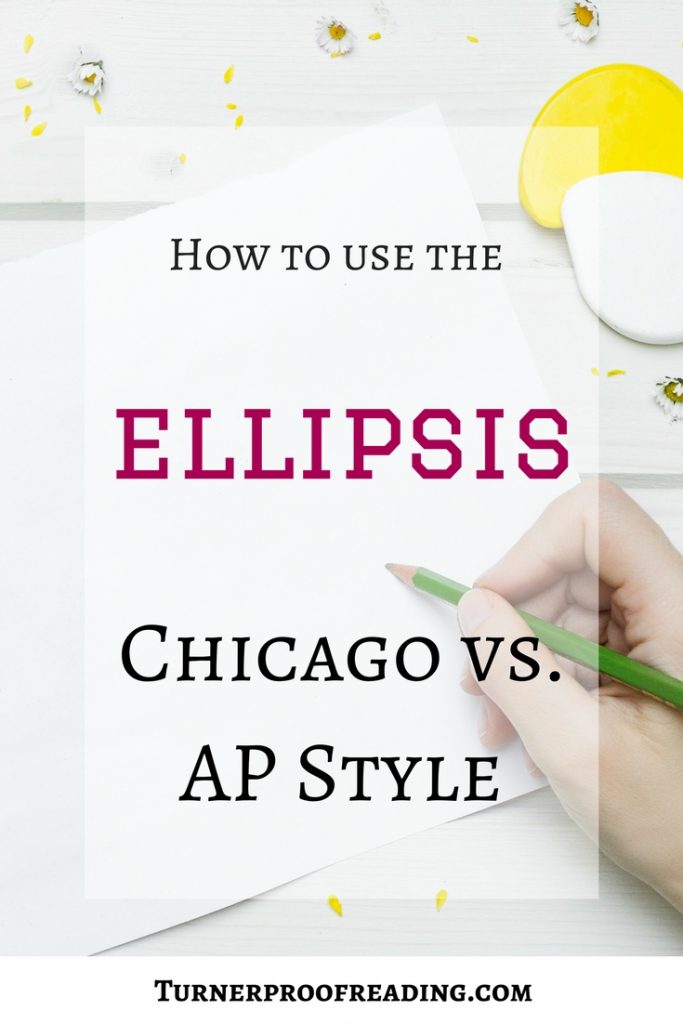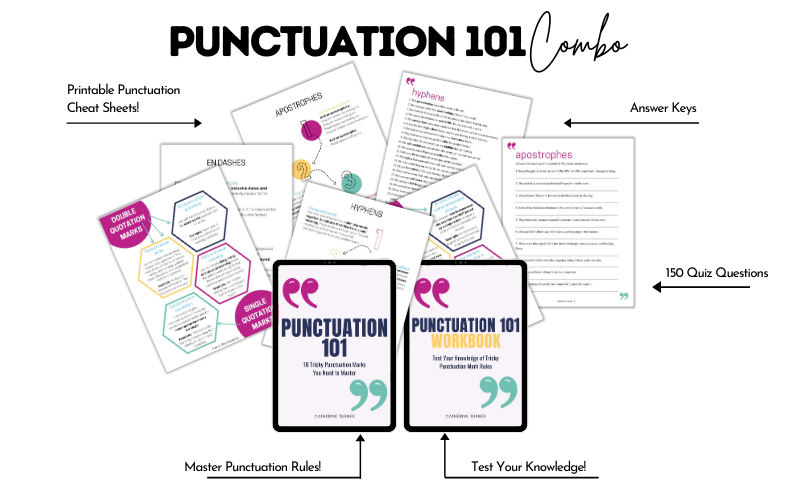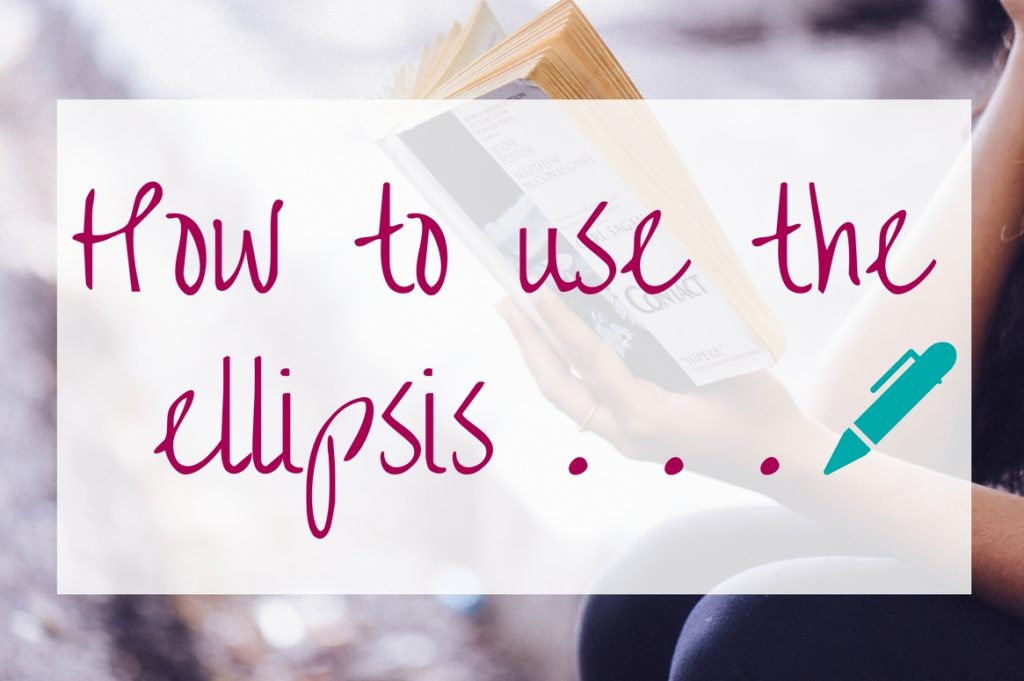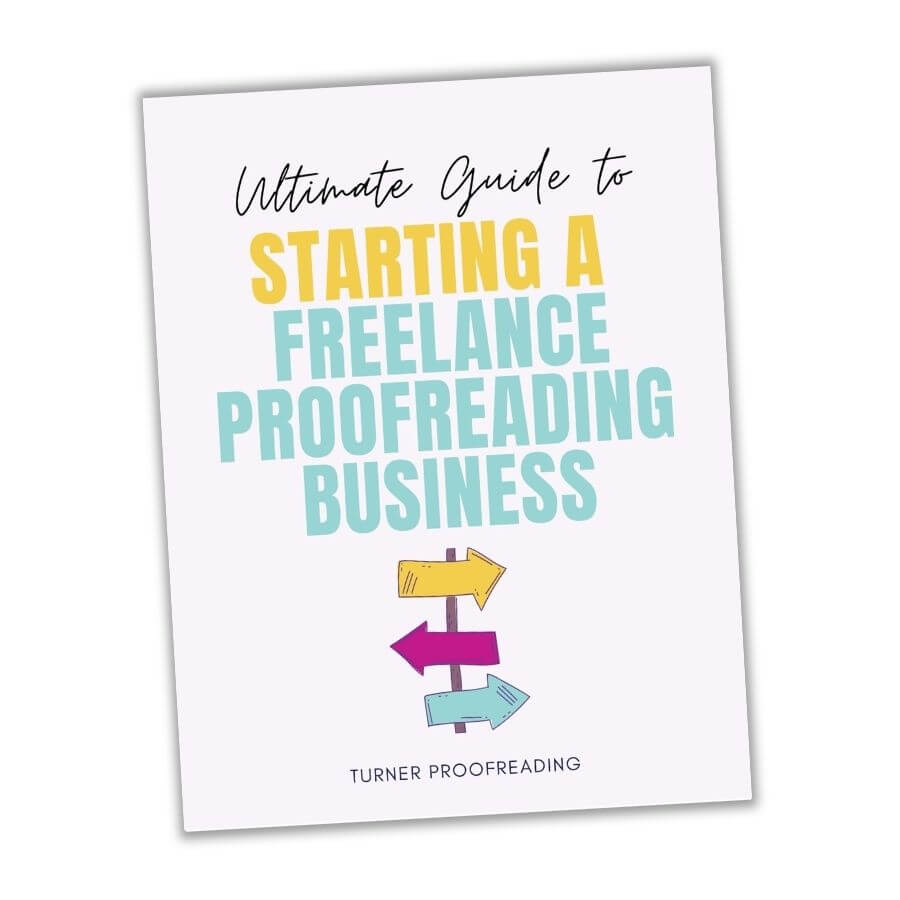This content may contain affiliate links. If you purchase through these links I may receive a commission at no extra cost to you. However, I only recommend products or services that I genuinely like and trust.
Confession time: Before I started proofreading professionally, I had no idea how to use an ellipsis. I wasn’t aware that people used the ellipsis so frequently; it just wasn’t on my radar.
The first proofreading job I took on after setting up my business had dozens of ellipses in it, so I had to learn how to deal with them quickly.
While that first job required me to apply The Chicago Manual of Style’s recommendations for the ellipsis, it got me thinking about how other style guides would treat it, particularly The Associated Press Stylebook.
Here’s a quick summary of the recommendations that these two style manuals give for how to use an ellipsis.
Table of Contents
How Do You Use an Ellipsis?
First of all, what is an ellipsis? An ellipsis (plural: ellipses) is a punctuation mark made up of three periods.
What is an ellipsis used for? Luckily, both style manuals agree on what an ellipsis should be used for. One less thing to worry about!
The ellipsis has two main uses: (1) to indicate an omission and (2) to indicate faltering speech or incomplete thoughts (trailing off).
Using an Ellipsis to Indicate an Omission
An ellipsis shows that something (a word, phrase, sentence, paragraph, or more) has been left out of a sentence. Ellipses can be useful when you want to omit certain text that is irrelevant to the discussion at hand.
Example of Using an Ellipsis to Indicate an Omission
Original quote
All the world is made of faith, and trust, and pixie dust.
― J.M. Barrie, Peter Pan
Quote with ellipsis
Chicago Style
All the world is made of faith . . . and pixie dust.
― J.M. Barrie, Peter Pan
AP Style
All the world is made of faith … and pixie dust.
― J.M. Barrie, Peter Pan
Using an Ellipsis to Indicate an Incomplete Thought or Trailing Off
An ellipsis can also be used to indicate faltering speech or trailing off. In this case, the dots are sometimes called suspension points.
This use of an ellipsis is better suited to informal writing; although, it’s also acceptable in fiction. It should be used sparingly in academic writing.
Example of Using an Ellipsis to Indicate an Incomplete Thought or Trailing Off
Chicago Style
So . . . what do you think?
AP Style
So … what do you think?
Related Content:
En Dash vs. Em Dash: When and How to Use Them
How to Use an Apostrophe (and Mistakes You Need to Avoid)
How to Use Commas (and Mistakes to Avoid)

PUNCTUATING AN ELLIPSIS
You will have noticed that there were punctuation differences in the examples above. Chicago Style (or CMOS) and AP Style differ when it comes to punctuating an ellipsis.
Chicago uses three spaced periods, like so . . .
AP Style says to treat the ellipsis as a three-letter word, i.e., three periods surrounded by a space on either side, like so …
Remember that it’s standing in for another word so treat it like you would any other word in a sentence and put a space on either side.
What If the Ellipsis Is Followed by Quotation Marks?
Chicago specifically states that there should be no space between the final ellipsis and the quotation mark.
AP Style doesn’t specify, but it looks wrong with a space, so I think it would be safer to leave out the space between the final ellipsis and the quotation mark.
Related Content:
Colon vs. Semicolon: When and How to Use Them
How to Use Quotation Marks (and the Difference between Single Quotes vs. Double Quotes)
Is an Ellipsis Always 3 Dots?
Yes, an ellipsis always has three dots.
You may sometimes see what looks like a four-dot ellipsis. There’s no such thing. A period can precede an ellipsis if the sentence before it constitutes a grammatically complete sentence.
Original quote
You’re mad, bonkers, completely off your head. But I’ll tell you a secret. All the best people are.
― Lewis Carroll, Alice in Wonderland
Quote with ellipsis
Chicago Style
You’re mad, bonkers, completely off your head. . . . All the best people are.
― Lewis Carroll, Alice in Wonderland
AP Style
You’re mad, bonkers, completely off your head. … All the best people are.
― Lewis Carroll, Alice in Wonderland
Personally, I prefer the look of Chicago’s ellipsis. I like things to be evenly spaced!
Grammar Posts
Different From vs. Different Than
Two Warnings about Using Ellipses
Warning #1: Be careful not to change the meaning of the sentence! You must be careful that the original sense is not lost or misinterpreted.
Warning #2: Use them sparingly as, although you may not be incorrect, using too many can be annoying! Who else is sick of reading blog posts, emails, or social media messages where every single sentence has an ellipsis??
Want to Learn More about Tricky Punctuation Issues?
Are you always worried that you’re not punctuating sentences correctly? Or you want to be a proofreader, but you’re worried your punctuation skills aren’t up to scratch? We all learned how to use commas, semicolons, etc. once upon a time, but information doesn’t always stick that well, and sometimes we hold on to incorrect information!
My Punctuation 101 e-book and workbook combo will help you refresh your memory of punctuation rules, learn the mistakes you need to avoid making, and polish your punctuation skills so you can wow your readers and clients.
It includes tons of example sentences so you can see the punctuation marks in action AND 150 quiz questions to help you retain that knowledge forever.

Are you a fan of the ellipsis? Or do you think people overuse it? Let me know in the comments below!
If you don’t want to bother with figuring out tricky grammar or punctuation issues yourself, let me do it for you. You can contact me about proofreading or copyediting here.
Worried your blog writing skills are not up to scratch? Luckily, improving your writing skills is easier than you think. Follow my tips and take your blog posts from hard-to-read to can’t-stop-reading!



Hello, Catherine,
I was trained in Chicago style, and I’ve just started using AP style in a new job in Corporate Communications. So I was ripe for your article. Thanks for sharing your knowledge so clearly.
I had a thought on the matter of how to coordinate quotation marks with the ellipsis in AP style. I wouldn’t normally leave a space between a word and a closing quotation mark. Since AP style says that the ellipsis should be treated as one would a word, I would think it logical to put the closing quotation mark right after the ellipsis, just as one would if it were a word. Just another way of looking at it …
Good point, Belinda! Chicago specifically mentions that there should be no space before the quotation mark, but AP didn’t mention it or give any examples that I could guess from. It looks silly with a space though, so I would prefer to close it up. More research needed! Thanks for your comment!